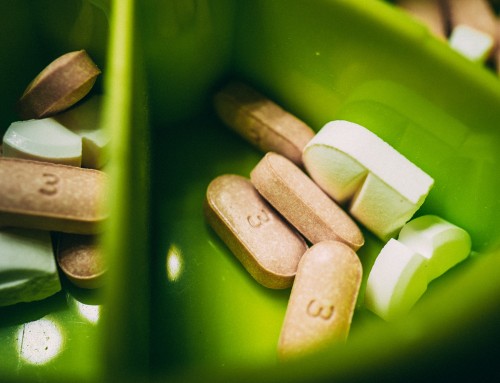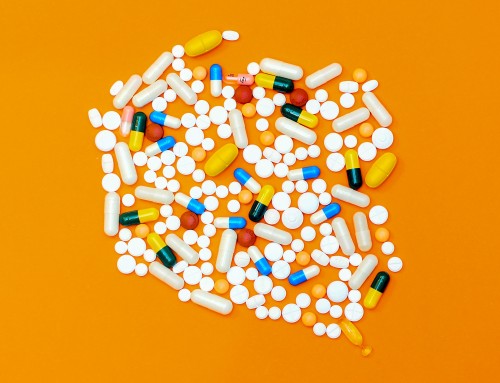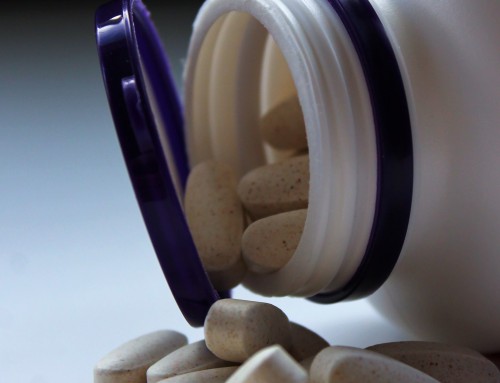Vitamin D – Frequently Asked Questions
Vitamin D
Vitamin D has for the last few years consistently been the one vitamin that has been searched for. It has received particular attention recently due to its preventative effects to Covid 19,
** Please note that no supplement or single vitamin has been found to cure Covid 19. Supplementation of vitamins is advised if you are deficient in this particular vitamin, by taking vitamin supplements, you cannot boost stores if you are not deficient as the body cannot store them.** .
That being said, it has been shown that Vitamin D deficiency is the most common especially in the winter due to a lack of its natural form, sunlight. It has also been found that around 50% of the world’s population may be at risk of being deficient in this vitamin (6). This article will aim to answer some of the most commonly searched questions to give you the best advice on whether or not it is right for you.
How is it made?
There are two ways Vitamin D is made both naturally and in supplement form
Naturally – Sunlight, the UV rays from the sunshine turns cholesterol in our skin to Vitamin D3, this vitamin is then taken to the kidneys via the liver where oxygen and hydrogen molecules are added to it to eventually make 1,25(OH)D or Calcitriol; otherwise known as Vitamin D. Natural sources of D3 are from oily fish, eggs and beef liver but in low amounts.
Supplement – Believe it or not Vitamin D supplements originate from Sheep’s wool. The substance that is needed is known as Lanolin. It is created by washing the fleece, then adding a detergent to extract the lanolin. This is then saponified (extracts the fat to make the chemical), and refined further to extract 7-dehydrocholesterol or pre vitamin where it is left out in the sunshine to mimic the chemical reaction in the skin to make Vitamin D3.
How does it help with the body/ Why is it important?
Vitamin D has several health benefits, firstly it helps increase bone health by allowing an increase of calcium absorption (1), secondly it can regulate immune function (2) and modulate inflammatory response (3).
Vitamin D has also been found to be key to optimal muscle function (4). The importance of Vitamin D in athletes whether professional or amateur has been noted as being vital for performance (5).
Is Vitamin D2 or D3 the same? Which should I take?
Both D2 and D3 have the potential to improve vitamin D levels, (ref), however vitamin D3 supplements can have a higher potency, and have been consistently found to be more effective than vitamin D2 (6,8)
As was mentioned earlier vitamin D3 supplements are derived from sheep’s wool, so if you are following a vegan diet this might not be a great choice to use. This is where Vitamin D2 can come into its own.
Vitamin D2 can also be known as ergocalciferol is created by radiating ergosterol (which comes from yeast) which results in provitamin D2. Natural sources of vitamin D2 are mushrooms.
How is it absorbed?
Vitamin D is absorbed from sunlight, the UV rays from the sunshine turns a chemical in our skin to Vitamin D3.
This vitamin is then taken to the kidneys via the liver where oxygen and hydrogen molecules are added to it to eventually make 1,25(OH)D or Calcitriol; otherwise known as Vitamin D.
Is it stored within the body?
When the body creates vitamin D, it is stored within the body’s fat tissues, until its needed. The length of time that vitamin D can stay in the body is around 82 days, (7).
However caution should be taken with this as if you are someone with relatively low fat percentage there won’t be enough fat tissue to store it which can lead it to entering the bloodstream which can absorb and use up calcium stores.
How much should I take and when should it be taken?
The recommended daily intake, (RDA), of vitamin D is 10 micrograms a day. This amount should be enough for most people. For children aged 1-10 years old it is recommended to consume no more than 50 micrograms a day.
It is highly recommended to not take more than 100 micrograms or 4000 UI, (Universal intake).
What Happens if I Take Too much Vitamin D?
If you take too much Vitamin D can cause calcium stores to be depleted which can lead to a condition known as hypercalcaemia. This condition can cause damage to the kidneys and heart, whilst weakening the bones.
Is it effective?
If you are deficient in vitamin D, supplementation is not only effective but imperative to make sure vital bodily functions as well as the benefit of many things discussed in this article. If deficient supplementation for 6-8 weeks should be long enough to notice the difference (9).
Is it vegan or is there a vegan equivalent?
As was mentioned before Vitamin D3 supplements are not vegan due to it being created from sheep’s wool. Vitamin D2 however is derived from plant sterols, which although have been found to not be as effective as D3 it is still possible to get enough to prevent deficiency.
D3 & Magnesium
In order for Vitamin D to work effectively your body will also require certain levels of other vitamins, including magnesium.
Magnesium is used for around 300 biochemical reactions in the body (10). It has been found to maintain muscle function (11), support a healthy immune system (12), keep the heart beat steady (13), and help strengthen bones (14). It has also been found to help maintain blood glucose levels (15) and aid in the production of energy and protein.
As was mentioned earlier in order for vitamin D3 to convert to the bioavailable version, ‘calcitriol’, it needs to pass through the liver and kidneys to add oxygen and hydrogen molecules, this can only happen if there are sufficient levels of magnesium to perform the task, (16).
Recommended Daily Allowance of Magnesium (17)
| Age | Male | Female | Pregnancy |
| ≤6 mo | 30 mg | 30 mg | … |
| 7-12 mo | 75 mg | 75 mg | … |
| 1-3 y | 80 mg | 80 mg | … |
| 4-8 y | 130 mg | 130 mg | … |
| 9-13 y | 240 mg | 240 mg | … |
| 14-18 y | 410 mg | 360 mg (a) | 400 mg |
| 19-30 y | 400 mg | 310 mg (a) | 350 mg |
| 31-50 y | 420 mg | 320 mg (a) | 360 mg |
| ≥51 y | 420 mg | 320 mg | … |
**(a) – Recommended daily allowance for females who are not pregnant and for females who are lactating.
D3 & Calcium
As magnesium helps with the function of vitamin D, vitamin D helps with the function and absorption of calcium in the body.
Calcium is a vital part of dietary consumption in order to aid growth and maintenance of bones (18). Other important benefits of calcium include helping blood clotting (19), heart contractions (20), lungs (21) and muscles to function properly, (22).
Vitamin D is needed in the absorption of calcium to help with functions described above however if you have too much vitamin D it can absorb too much and can result in a condition called hypercalcemia, which can lead to a buildup of calcium in the arteries and soft tissue.
The symptoms of this condition include frequent urination, nausea, weakness and vomiting. In order to help vitamin D to transport calcium to the bones vitamin K2 is required.
D3 & K2
Having a sufficient amount of vitamin K2 can help vitamin D with the transportation of calcium into the bones, which activates proteins that help with bone density. It also helps with reducing calcium build up in the arteries.
What benefits can it bring?
There have been many suggested benefits for having optimum levels of vitamin D. Below are several of the major benefits, we are going to look at the evidence to see if they back up the claims;
Weight loss – Verdict – No
It has been observed that obesity is closely linked with low levels of Vitamin D, (23). This has led to studies looking at if this deficiency is coincidental or not, (24). Vitamin D has been found to be ineffective for weight loss (25,26).
What has been observed though is that effective forms of weight loss, (i.e well balanced diet, regular exercise), has been able to increase levels of vitamin D (27), this has been attributed to stored levels of vitamin D being released when fat stores are burned, (28).
Rheumatoid Arthritis – Verdict – Yes
Vitamin D has been found to help with several autoimmune diseases. A few studies have noticed a link with vitamin D deficiency and rheumatoid arthritis (29), however the exact effect is up to speculation but it’s suggested that vitamin D can induce immune tolerance thus reducing the risk of rheumatoid arthritis, (30). Rheumatoid arthritis is linked to higher prevalence of osteoporosis, (31) which as we have discussed previously in this article Vitamin D can help with calcium absorption and so in turn, is recommended to reduce the damaging effects this can have.
Sleep – Verdict – Yes
One study found people with a vitamin D Deficiency felt more tired during the day than those with relatively healthy levels of Vitamin D, (32). The underlying mechanisms for why vitamin D can improve sleep is due to the high prevalence of vitamin D receptors (VDR) in parts of the brain that are responsible for sleep regulation, (33).
References
1 – Holick, M. F. (2007). Vitamin D deficiency. New England Journal of Medicine,357(3), 266-281.
2 – Gombart, A. F., Borregaard, N., & Koeffler, H. P. (2005). Human cathelicidin antimicrobial peptide (CAMP) gene is a direct target of the vitamin D receptor and is strongly up-regulated in myeloid cells by 1, 25-dihydroxyvitamin D3. The FASEB Journal, 19(9), 1067-1077.
3 – Zittermann, A. (2003). Vitamin D in preventive medicine: are we ignoring the evidence?. British Journal of Nutrition, 89(05), 552-572.
4 – Hamilton, B. (2010). Vitamin D and human skeletal muscle. Scandinavian journal of medicine & science in sports, 20(2), 182-190.
5 – Larson-Meyer, D. E., & Willis, K. S. (2010). Vitamin D and athletes. Current sports medicine reports, 9(4), 220-226.
6 – Chakalian, M., Cao, J., Hu, J., Vanous, C., & Sum, S. (2020). Vitamin D2 and D3 Supplementation Effect on Serum 25 (OH) D Levels: A Meta-Analysis. Current Developments in Nutrition, 4(Supplement_2), 1782-1782.
7 – Oliveri B , Mastaglia SR , Brito GM , Seijo M , Keller GA , Somoza J , Diez RA , Di Girolamo G . Vitamin D3 seems more appropriate than D2 to sustain adequate levels of 25OHD: a pharmacokinetic approach. Eur J Clin Nutr. 2015;69(6):697–702.
8 – Heaney, R. P., Recker, R. R., Grote, J., Horst, R. L., & Armas, L. A. (2011). Vitamin D3 is more potent than vitamin D2 in humans. The Journal of Clinical Endocrinology & Metabolism, 96(3), E447-E452.
9 – Holick, M. F. (2007). Vitamin D deficiency. New England journal of medicine, 357(3), 266-281.
10 – Ryan, M. F. (1991). The role of magnesium in clinical biochemistry: an overview.Annals of Clinical Biochemistry: An international journal of biochemistry in medicine, 28(1), 19-26.
11 – Dørup, I., Skajaa, K., Clausen, T., & Kjeldsen, K. (1988). Reduced concentrations of potassium, magnesium, and sodium-potassium pumps in human skeletal muscle during treatment with diuretics. British medical journal (Clinical research ed.), 296(6620), 455.
12 – Tam, M., Gomez, S., Gonzalez-Gross, M., & Marcos, A. (2003). Possible roles of magnesium on the immune system. European journal of clinical nutrition,57(10), 1193-1197.
13 – White, R. E., & Hartzell, H. C. (1989). Magnesium ions in cardiac function: regulator of ion channels and second messengers. Biochemical pharmacology,38(6), 859-867.
14 – Okuma, T. (2001). Magnesium and bone strength. Nutrition, 17(7), 679-680.
15 – Paolisso, G., Scheen, A., d’Onofrio, F., & Lefèbvre, P. (1990). Magnesium and glucose homeostasis. Diabetologia, 33(9), 511-514.
16 – Uwitonze, A. M., & Razzaque, M. S. (2018). Role of magnesium in vitamin D activation and function. Journal of Osteopathic Medicine, 118(3), 181-189
17 – Institute of Medicine (US) Standing Committee on the Scientific Evaluation of Dietary Reference Intakes. (1997). Dietary reference intakes for calcium, phosphorus, magnesium, vitamin D, and fluoride.
18 – Harada, S. I., & Rodan, G. A. (2003). Control of osteoblast function and regulation of bone mass. Nature, 423(6937), 349-355.
19 – Bogdanova, A., Makhro, A., Wang, J., Lipp, P., & Kaestner, L. (2013). Calcium in Red Blood Cells—A Perilous Balance. International journal of molecular sciences, 14(5), 9848-9872.
20 – Dhalla, N. S., Pierce, G. N., Panagia, V., Singal, P. K., & Beamish, R. E. (1982). Calcium movements in relation to heart function. Basic research in cardiology, 77(2), 117-139.
21 – Hawgood, S., Benson, B. J., & Hamilton Jr, R. L. (1985). Effects of a surfactant-associated protein and calcium ions on the structure and surface activity of lung surfactant lipids. Biochemistry, 24(1), 184-190.
22 – Berchtold, M. W., Brinkmeier, H., & Müntener, M. (2000). Calcium ion in skeletal muscle: its crucial role for muscle function, plasticity, and disease.Physiological reviews, 80(3), 1215-1265.
23 – Mallard, S. R., Howe, A. S., & Houghton, L. A. (2016). Vitamin D status and weight loss: a systematic review and meta-analysis of randomized and nonrandomized controlled weight-loss trials. The American journal of clinical nutrition, 104(4), 1151-1159.
24 – Earthman, C. P., Beckman, L. M., Masodkar, K., & Sibley, S. D. (2012). The link between obesity and low circulating 25-hydroxyvitamin D concentrations: considerations and implications. International journal of obesity, 36(3), 387-396
25 – Chandler, P. D., Wang, L., Zhang, X., Sesso, H. D., Moorthy, M. V., Obi, O., … & Song, Y. (2015). Effect of vitamin D supplementation alone or with calcium on adiposity measures: a systematic review and meta-analysis of randomized controlled trials. Nutrition reviews, 73(9), 577-593.
26 – Pathak, K., Soares, M. J., Calton, E. K., Zhao, Y., & Hallett, J. (2014). Vitamin D supplementation and body weight status: a systematic review and meta‐analysis of randomized controlled trials. Obesity reviews, 15(6), 528-537.
27 – Wortsman, Jacobo, et al. “Decreased bioavailability of vitamin D in obesity.” The American journal of clinical nutrition 72.3 (2000): 690-693.
28 – Drincic, A. T., Armas, L. A., Van Diest, E. E., & Heaney, R. P. (2012). Volumetric dilution, rather than sequestration best explains the low vitamin D status of obesity. Obesity, 20(7), 1444-1448.
29 – Cutolo, M., Otsa, K., Uprus, M., Paolino, S., & Seriolo, B. (2007). Vitamin D in rheumatoid arthritis. Autoimmunity reviews, 7(1), 59-64.
30 – Weiss, S. T. (2011). Bacterial components plus vitamin D: the ultimate solution to the asthma (autoimmune disease) epidemic?. Journal of Allergy and Clinical Immunology, 127(5), 1128-1130.
31 – Varenna, M., Manara, M., Cantatore, F. P., Del Puente, A., Di Munno, O., Malavolta, N., … & Rossini, M. (2012). Determinants and effects of vitamin D supplementation on serum 25-hydroxy-vitamin D levels in patients with rheumatoid arthritis. Clinical and Experimental Rheumatology-Incl Supplements, 30(5), 714.
32 – McCarty, D. E., Reddy, A., Keigley, Q., Kim, P. Y., & Marino, A. A. (2012). Vitamin D, race, and excessive daytime sleepiness. Journal of Clinical Sleep Medicine, 8(6), 693-697.
33 – Stumpf, W. E., Sar, M., Clark, S. A., & DeLuca, H. F. (1982). Brain target sites for 1, 25-dihydroxyvitamin D3. Science, 215(4538), 1403-1405.34 – Gao, Q., Kou, T., Zhuang, B., Ren, Y., Dong, X., & Wang, Q. (2018). The association between vitamin D deficiency and sleep disorders: a systematic review and meta-analysis. Nutrients, 10(10), 1395.




